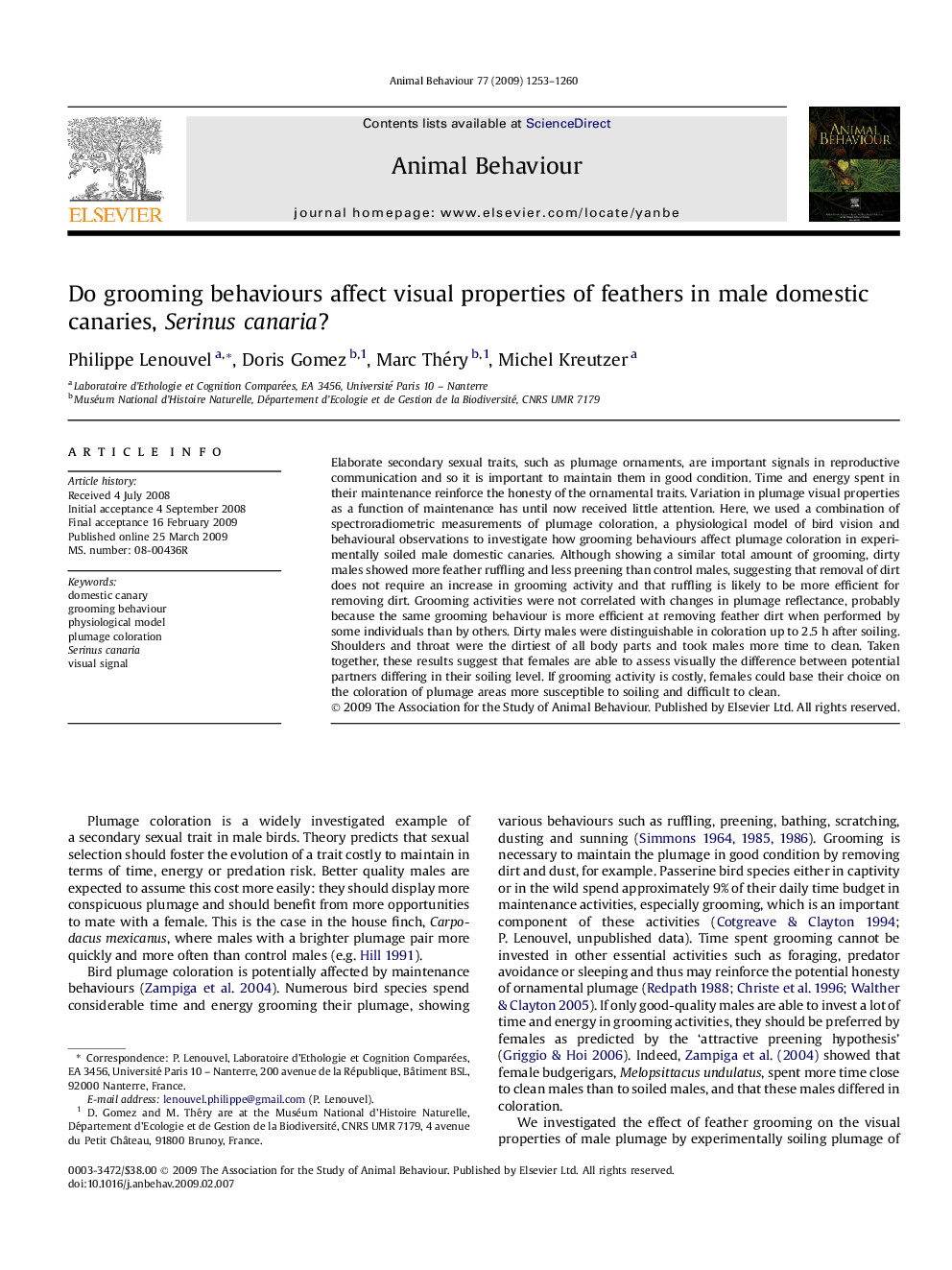| Article ID | Journal | Published Year | Pages | File Type |
|---|---|---|---|---|
| 2417642 | Animal Behaviour | 2009 | 8 Pages |
Elaborate secondary sexual traits, such as plumage ornaments, are important signals in reproductive communication and so it is important to maintain them in good condition. Time and energy spent in their maintenance reinforce the honesty of the ornamental traits. Variation in plumage visual properties as a function of maintenance has until now received little attention. Here, we used a combination of spectroradiometric measurements of plumage coloration, a physiological model of bird vision and behavioural observations to investigate how grooming behaviours affect plumage coloration in experimentally soiled male domestic canaries. Although showing a similar total amount of grooming, dirty males showed more feather ruffling and less preening than control males, suggesting that removal of dirt does not require an increase in grooming activity and that ruffling is likely to be more efficient for removing dirt. Grooming activities were not correlated with changes in plumage reflectance, probably because the same grooming behaviour is more efficient at removing feather dirt when performed by some individuals than by others. Dirty males were distinguishable in coloration up to 2.5 h after soiling. Shoulders and throat were the dirtiest of all body parts and took males more time to clean. Taken together, these results suggest that females are able to assess visually the difference between potential partners differing in their soiling level. If grooming activity is costly, females could base their choice on the coloration of plumage areas more susceptible to soiling and difficult to clean.
